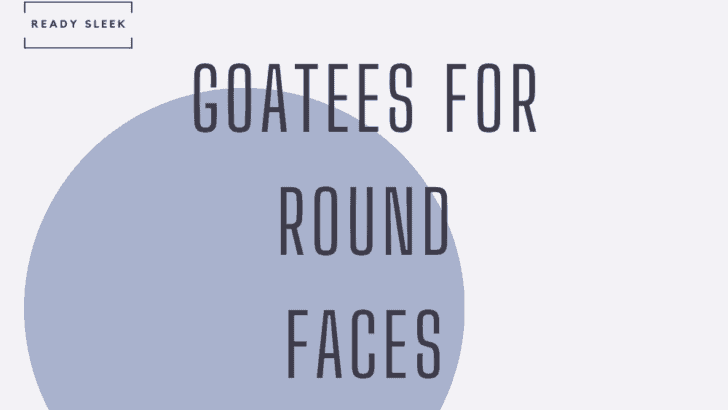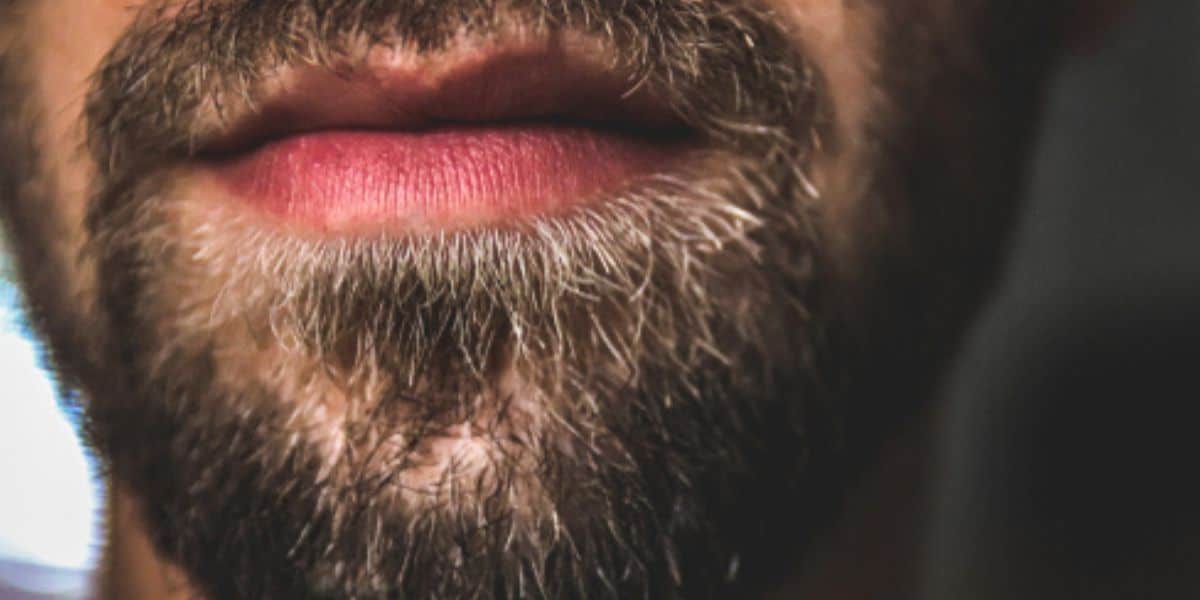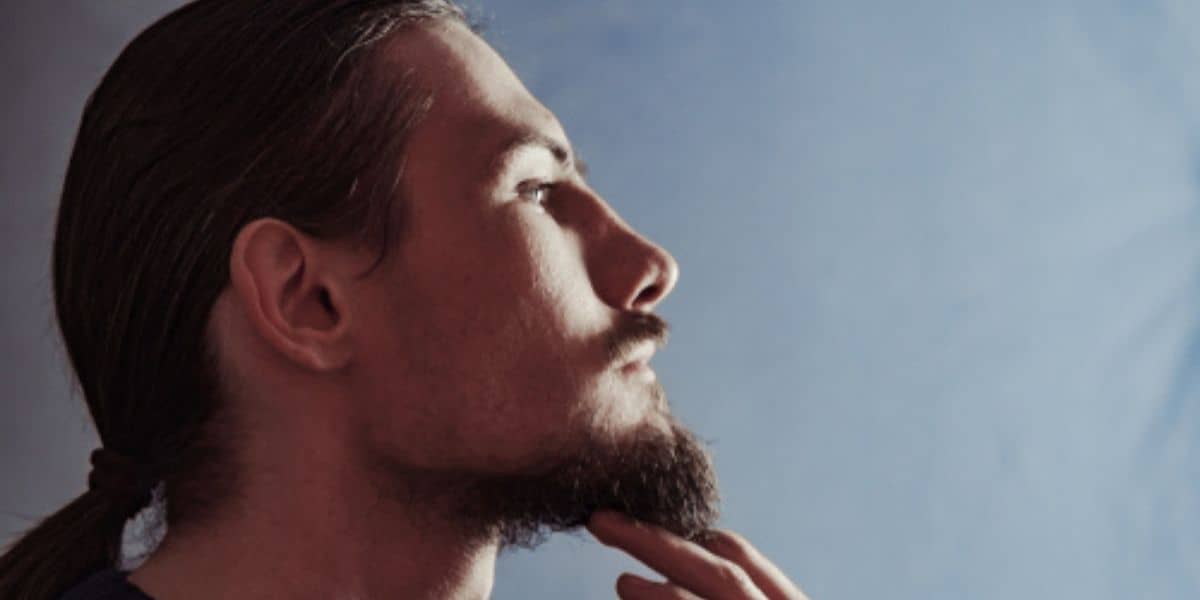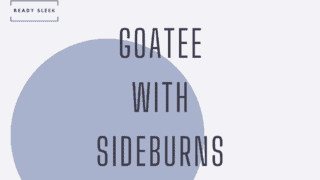Facial hair has the fantastic attribute of being able to contour the face in ways you wouldn’t have thought possible. Today, I’m going to talk about goatees for round faces. The best ones to choose from, why they’re great, and how to trim one for yourself.
The main reason that men with round faces often choose goatees is that they have the remarkable ability to elongate the face. By definition, a goatee style consists of hair on the chin, but not on the cheeks.
This can result in a more oval shape overall, which many round-faced men find appealing.
The beauty of it is that it’s surprisingly easy to achieve this change. Goatees are relatively low maintenance, although it does somewhat depend on the particular style.
Let’s move swiftly on to list the best ones you would have to choose from.
Please note that this article isn’t just about the best goatees for “fat” faces, at the risk of sounding offensive. Many men who aren’t overweight at all have round faces as well.
9 Best Goatee Styles For Round Faces
Bear in mind that although traditionally a “goatee” consisted of just hair on the chin, these days a mustache is often also included.
Ultimately, the only rule that needs to be applied is that there cannot be any hair on the cheeks. Here are the best ones, together with reasons why they’re great for round faces specifically.
1. Stubble goatee
Be sure not to confuse this with the goatee with stubble which you can find further down this list.
The stubble goatee is simply a goatee style where the facial hair is a length that can be considered “stubble”. The usual definition for this is less than 5mm long.
The beauty of this style is that it doesn’t take long to achieve. Even heavy stubble can be achieved in around 10 – 12 days. Once you’ve let it grow for this long, simply carve out a goatee style.
It’s extremely versatile and low-key. Although you wouldn’t draw much attention to yourself, you would still have the benefit of the goatee subtly elongating the face.
Bear in mind that this effect won’t be as pronounced as it would be with longer goatee styles. But the effect is still noticeable.
Stubble has been deemed the most attractive beard length by an American research project, so is worth paying attention to for that reason alone.
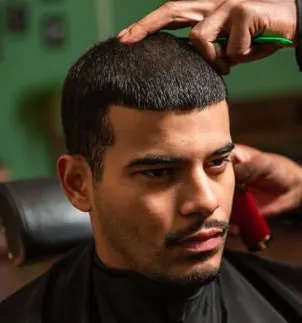
From Shutterstock
2. Traditional goatee
As I mentioned earlier, the traditional concept of a “goatee” is simply a tuft of hair on the chin and nowhere else. No mustache, cheek hair, or neck hair.
Its also known as a “classic” goatee. Although it isn’t nearly as common as it was in the 1950s and 60s, it can still be considered a popular style. Goatees are everywhere.
It’s minimalist, but still does a good job of adding length to the chin. Goatee “purists” actually consider this style to be the only true goatee style. That’s an argument for another day.
The style is pretty easy to achieve as most facial hair is simply shaved off. The only variable is how long you want the goatee (chin beard) to be.
Of course, the longer you have it, the more pronounced the effect would be.
This is something you can experiment with over time.
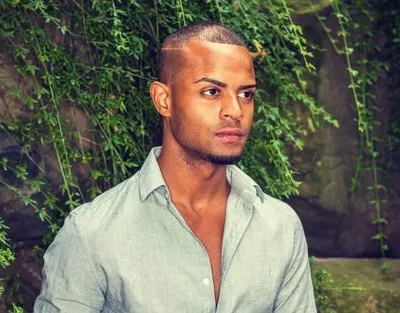
From Shutterstock
3. Full Goatee
This is arguably the style that most men think of when they hear the term “goatee”. Since the 1990s, goatees have consistently incorporated the mustache.
A classic, full goatee style is one where the chin beard and mustache connected. It produces the effect of the facial hair encircling the mouth, which is why it’s sometimes referred to as a “circle beard”.
The style is a little more technical to pull off than a traditional goatee, as the sides are important to get right.
There’s a risk of making the goatee too narrow – avoid this by allowing the sides to follow the natural curve of the mustache.
Round-faced men have chosen this goatee style for decades. It’s a simple and sleek style where there’s no hair on the cheeks and plenty in the center of the face.
This gives the sides of the face less volume and the center more prominence, which is ideal for a round face.

4. Extended Goatee
This is similar to the full goatee, but the bottom edges tail back partially along the jawline. Not far back enough to be considered a “goatee with chinstrap”, but enough to be noticeable.
The sideburns are often very short with this style as well.
The benefits of the extended goatee for round faces are similar to those of the full goatee.
Much like the chinstrap, however, it has the additional benefit of adding some definition to the jawline as well.
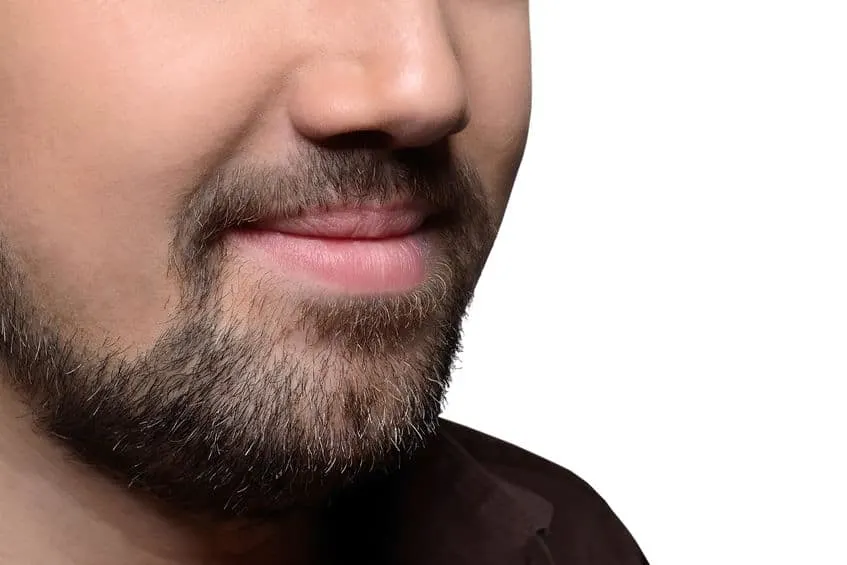
5. Goatee With Soul Patch
The goatee with soul patch is a hark back to the beatnik era of the 1940s. Closely tied to images of renowned poets and artists of the 20th century, it adds a touch of sophistication to a goatee.
The soul patch is a small patch of hair immediately beneath the lower lip. Although many goatee styles incorporate a soul patch unknowingly, being intentional with it produces better results.
A carefully-trimmed soul patch in the middle of a full goatee is a very simple way to make it a little bit more interesting.

6. Pencil Goatee With No Soul Patch
This one is pretty self-explanatory. Removing the soul patch produces a more striking effect than you would have thought.
It suits a “pencil goatee” very well. In this style, the edges are very thin and there is no hair in the middle. It’s almost like it’s been drawn on using a stencil.
The style is modern, slick, and is generally worn by younger men who strive for an urban aesthetic.
It does require a little more technical skill to pull off the intricate edges.
Overall, it’s a phenomenal choice for men with round faces.
7. Goatee With Chinstrap
This is a fantastic hybrid style consisting of a full goatee and a chinstrap. A chinstrap is a strip of hair – thick or thin – that runs along the jawline.
The main reason this is great for men with round faces is that it adds phenomenal definition to the jawline.
Having a strip of hair that runs either side of the jawline is a great way to contour it and add shadowing.
There aren’t many styles that can do this so effortlessly. In my opinion, the most attractive width for a chinstrap is around an inch, but this is something you can experiment with.
Although chinstraps on their own don’t have the best reputation, the addition of a goatee transforms it completely. It’s so much more versatile and universally accepted.
Definitely one to try out – it isn’t hard to trim at all.
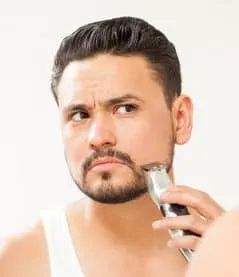
8. Goatee With Stubble
This one is not to be confused with the stubble goatee. This style consists of a full goatee where the length of hair is longer than stubble (>5mm).
However, there is also hair surrounding it that is traditionally considered “stubble”.
This one is controversial because technically there is hair on the cheeks. Because of this, can it really be labeled a “goatee”?
That’s an argument for another day. Overall, the effect is that of a classic goatee, because the hair on the cheeks is so much shorter than that of the goatee.
The reason this style is great for round-faced men is that it adds shadowing to the cheeks. This is a great way to contour the cheekbones and give a round face more definition.
You may have noticed that adding contouring, definition, and shadowing to the face is the most desirable outcome for a round face.
Check this article out to find out how to trim the goatee with stubble. It isn’t as hard as it might first seem.
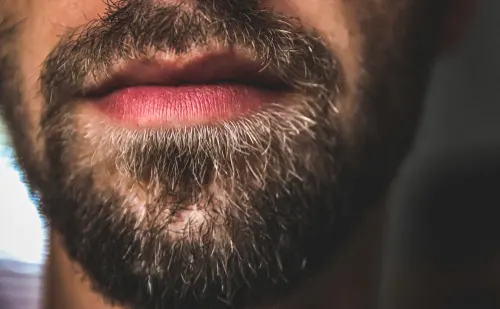
From Shutterstock
9. Disconnected mustache and goatee
This is a whole subgenre of goatee that I wanted to touch upon. Disconnected goatee styles are ones where the mustache and chin beard don’t connect. As always, there is no way on the cheeks.
The benefits for men with round faces are similar to those listed in the previous styles. However, an additional benefit here is that it’s great for round-faced men with patchy beards that don’t connect properly.
It’s also great for mustache lovers because it gives added prominence to the mustache in a way that the styles listed above don’t.
The Van Dyke is an example of a disconnected goatee variant, where the mustache is curled into a handlebar and the chin beard is trimmed pointy.
It’s a little more technical to achieve.
If you wanted to see whether or not a disconnected goatee would work for you, it doesn’t take long to find out. Simply trim and shave the point where your mustache and chin beard connect and assess the look.
You may be pleasantly surprised.
How To Trim A Goatee For A Round Face
Each of the styles above would be deserving of their own tutorial. In fact, I did add some links to articles on those specific styles.
What I wanted to do was give you a brief, step-by-step tutorial on how to trim a classic, full goatee.
This is arguably the most useful one to learn because if you can trim this one properly, the others will fall into place too.
1. Trim all of it down
Trim your entire beard down to an even length – your mustache, chin beard, cheeks, and neck.
Yes, a lot of this will be trimmed and shaved off later on. But it’s important to start off with a level playing field where all of the hair is even.
This makes it much easier to carve out your goatee shape later on.
You’ll need an electric trimmer for this. If you don’t have one, check out the Philips Norelco Oneblade QP6520/70 on
Amazon here.
Set your trimmer to your length of choice. Remember, this will be the length your goatee will ultimately end up.
This is a personal preference, anything up to 10mm works great for a classic Full Goatee. But that’s not to say that longer lengths wouldn’t work either.
2. Trim your goatee outline
It’s best to do this using the naked blade of your trimmer. That means using the blade alone without any attachable guards or combs.
Trim the sides of your goatee first. Remember, be careful not to make the goatee too narrow.
A common mistake is to make the sides vertical because a good goatee has sides that follow the natural curve of the mustache downwards.
Think of your goatee sides as simply a natural extension of your mustache downwards.
Once you’ve visualized these lines, trim everything that lies outside them. This includes the cheeks, as well as the neck.
Remember to leave your neckline at the correct height. The neckline is the border between your neck hair and neck skin. Although the neckline of a goatee isn’t very wide at all, it still needs to lie at the right height.
It should lie around two finger-widths above the Adam’s Apple – not too low, and not too high.
You’ve just trimmed your goatee outline, hopefully very effectively. It won’t be perfect the first few times you do it, but you’ll get so much better with practice.
At this point, it’s time to neaten things up a little.
Neaten up the mustache by very carefully trimming any stray hairs that crawl over the upper lip. This is always unattractive.
If you want to, define the soul patch by trimming the stray hairs immediately to the sides of it. Be careful not to trim into the goatee itself.
A soul patch can be trimmed into a circle, oval, or even a triangle. Experiment with it if you wish to. Alternatively, you can remove the soul patch altogether.
This is also a good point to determine whether or not you want to disconnect the chin beard and mustache (see number 9, above).
If you notice that you’ve got very patchy growth at the connection point in any case, this may be something you want to try.
As you can see, the options are endless. Goatees for round faces can take so many different forms – it’s great.
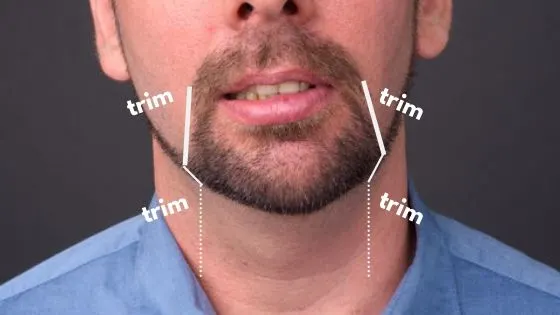
3. Shave
Although this is technically optional, it’s highly recommended.
The naked blade of a trimmer is great for trimming the hair down to very short stubble – even as short as 0.4mm in most cases.
But there’s still stubble in the areas outside of the goatee outline. This includes the cheek and the neck. Neck stubble is never attractive, no matter how short it is.
So, if you want a slick-looking goatee, you’ll want to shave these areas for perfection.
Conclusion
There you have it. You’ve seen what’s available and why they’re great for round-faced men.
Face shape undoubtedly plays a huge role when it comes to choosing a beard style. Goatees have always worked so well for men with round faces – it’s a tried and tested approach.
Hopefully, you found that useful. Experimentation is crucial here. Try out those styles for yourself until you find one that truly resonates with you.
Ready Sleek founder. Obsessed with casual style and the minimalist approach to building a highly functional wardrobe. Also a fan of classic, vintage hairstyles.

